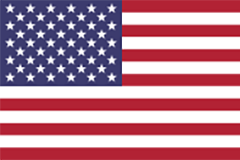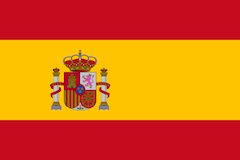The 1532 arrival of the Spanish with a mandate for conquest began the European colonization of the Andes. Francisco Pizzaro (ca. 1470s–1541) and his conquistadores encountered the Inca in the midst of a fraternal war between Atahualpa and Huascar to become ruler (Sapa Inca) of the vast Inca empire. In 1533 Pizarro ordered the execution of Atahualpa, who refused to acknowledge the Spanish and pay tribute. Resistance to foreign occupation continued until the late 1570s in areas that were difficult to access and subjugate, but the reign of the Inca ended with the defeat of their forces in the mountains of Vilcabamba and the execution of Tupac Amaru by the Viceroy of Francisco de Toledo in 1572.
Spanish conquistadors and European missionaries forever transformed the fabric of Andean societies. The stone walls of pre-Inca and Inca sites and religious centers became the foundations upon which they erected new colonial ones. They solidified control over the region with the integration of Inca nobles and elites as administrators (caciques and kurakas) of local municipalities and provinces. Europeans also brought enslaved people from West and Central Africa to the Americas, and they became part of a hierarchical racialized caste system (casta). White Spaniards born in Spain (peninsulares) and in the Americas (criollos) distinguished themselves from mixed-race people of Spanish-Indian decent (mestizo, misti, or cholo), native Andeans (indios or naturales), mixed-race Africans (mulatos and sambos), and Africans (negros). Enslaved Andeans and Africans occupied the most negligible positions in society.
The introduction of new diseases was devastating and a significant cause of population displacement and migration during the colonial period. So too was the coerced conversion to Catholicism of the local Andean people, though conversion might also be surreptitious or intentional and advantageous. The inextricable link between the importation of religion and new diseases manifested in the 16th-century Taki Unquy movement, which was a revolt against the imposition and expansion of Christianity in favor of returning to religious worship of ancient sacred entities (wak’as or huacas). Uprisings against regional administrators and challenges to Spain’s civil authority to rule routinely occurred during the colonial period. Following a decade of inconclusive military battles against Spain, which was then allied with Britain and Portugal in war against France, Peru and Bolivia declared independence in 1821 and 1825 under the leadership of José de San Martin (1778–1850) and Simón Bolivar (1783–1830), respectively.
Indigenismo, a modernist movement during the late 19th and 20th centuries, was intent on elevating marginalized “indigenous” peoples—the different groups of Quechua- and Aymara-speaking rural farmers and pastoralists—as the heart of progress and culture in the Andes. José Carlos Mariátegui (1894–1930), Luis E. Valcárcel (1891–1987), José Uriel Garcia (1894–1965), and other Andean intellectuals campaigned during the early 20th century to valorize the authenticity of the Indian through their writing and prominent positions in cultural and political institutions. Their efforts were concurrent with the rediscovery of the incredible achievements of ancient Andean civilizations, such as the rediscovery of Machu Picchu in 1911 by Hiram Bingham (1875–1956) and the carved granite monument (“Tello Obelisk”) at Chavín de Huantar by Julio C. Tello in 1919. Photography, introduced to the Andes in the mid-19th century, as well as other artistic practices emerged as powerful tools for visualizing indigenismo. The equitable application of the movement’s ambitions was, however, constrained by a racial hierarchy inherited from the colonial era. Discussed in the next section by Zoila S. Mendoza, since the beginning of the colonial period, religious festivals and public performances have been sites readily available to all Andeans to confront social upheaval and transform imposed traditions into new forms of personhood and visual culture. As ongoing annual events, they continually redeploy the past anew for successive generations. Despite this increasing distance from an idealized Andean past, these histories and reconfigurations of visual culture continue to reverberate in the world of the Central Andes.







